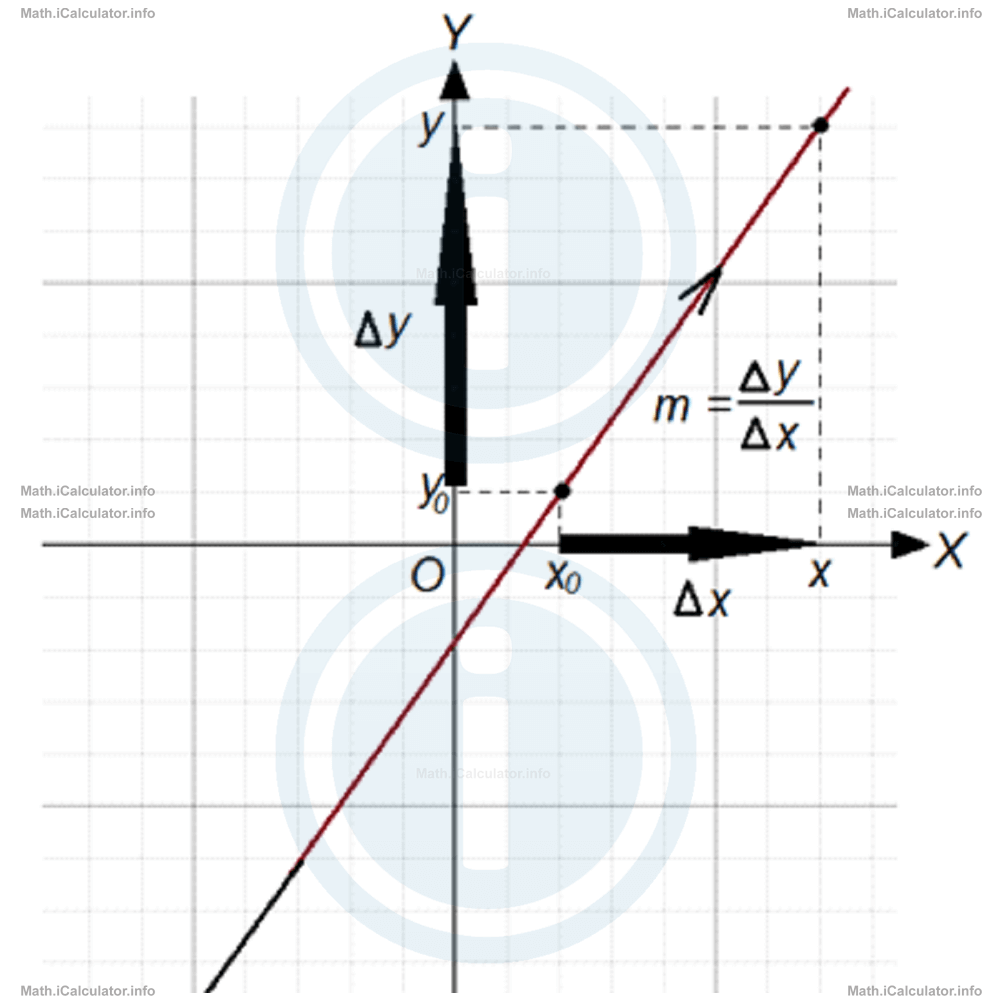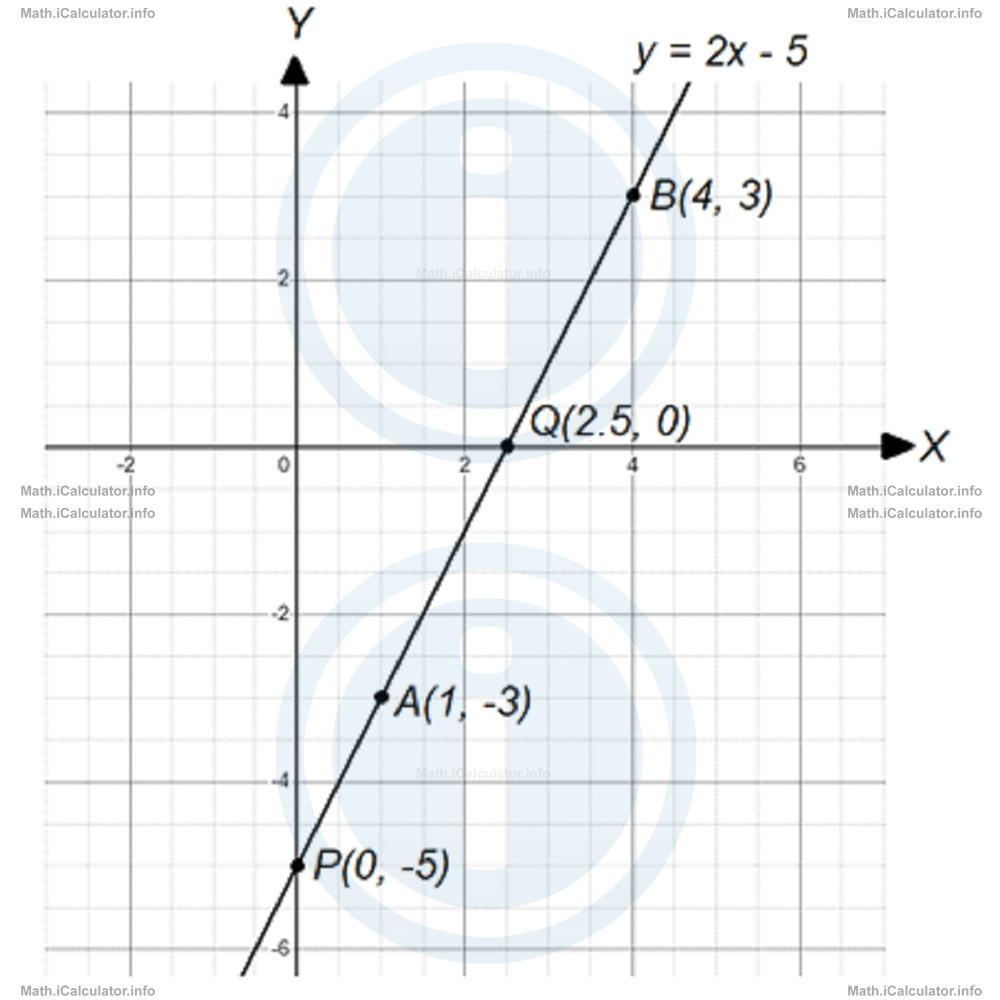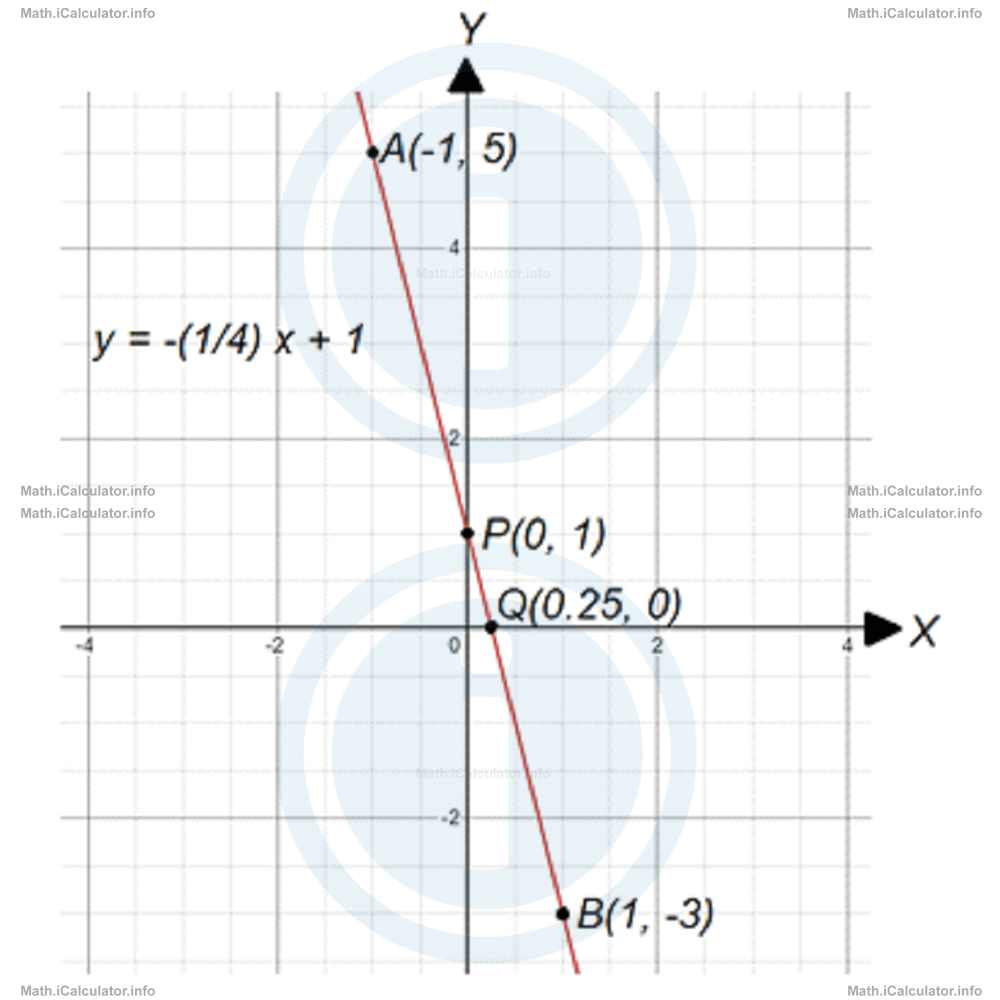Menu
Math Lesson 14.3.2 - How to find the Equation of a Line?
Please provide a rating, it takes seconds and helps us to keep this resource free for all to use
Welcome to our Math lesson on How to find the Equation of a Line? , this is the second lesson of our suite of math lessons covering the topic of Equation of Linear Graphs, you can find links to the other lessons within this tutorial and access additional Math learning resources below this lesson.
How to find the Equation of a Line?
We defined and explained equation of a line in previous tutorials. However, here we will prove the accuracy of this equation using the gradient concept. Thus, given that any shift along the graph line brings a change in coordinates - which we denote as Δx and Δy respectively - we can write the final coordinates (x, y) of a point that starts moving from the point with coordinates (x0, y0) and shifts by Δx and Δy along the line as
and
We can express the above equations as
and
From the definition of the gradient m, we know that
Hence,
Expanding the right side and collecting the like terms yields
y = mx + y0 - mx0
Expressing y0 - mx0 by a single letter (we usually take it as n), yields the simplified equation of a line
which we have taken as granted in the previous tutorials.
Look at the figure below for a better understanding of the above situation.

Since the constant n is
we can find the formulas for the x- and y-intercepts by rearranging the above equation to isolate x0 and y0. This only requires us to consider the upper-right part of the XY coordinates system. Thus, the x-intercept of a line for which the corresponding y-coordinate is zero (y0 = 0) is
and the y-intercept of the same line for which the corresponding x-coordinate is zero (x0 = 0) is
Example 2
- Without plotting the graph, find the x- and y-intercepts of the liney = 2x - 5
- Then, plot the graph to confirm the result.
Solution 2
- We have m = 2 and n = -5. Given the formulas for calculating the x- and y-intercepts of the line xint = -n/m and yint = nwe obtain after substituting the above values:xint = -(-5)/2and
= 5/2
= 2.5yint = -5This means the intercepts are at points P(0, -5) and Q(2.5, 0) - The graph of a line is obtained by connecting two known points of the graph and extending the straight line obtained beyond these two points. We can take two random values for the variable x; for example x = 1 and x = 4 and find the corresponding values by substituting them in the line's equation. Thus, for x = 1, we have y(1) = 2 ∙ 1 - 5and for x = 4, we have
= 2 - 5
= -3y(4) = 2 ∙ 4 - 5Therefore, the graph passes through the two points A(1, -3) and B(4, 3). The graph is obtained by connecting these two points and extending the line beyond them, as shown in the figure below.
= 8 - 5
= 3 As you see, all the four points identified in (a) belong to the line y = 2x - 5. This means the solution is correct.
As you see, all the four points identified in (a) belong to the line y = 2x - 5. This means the solution is correct.
Remark! You don't need to remember the formulas for the x-and y-intercepts given above in theory. All you need to do is to substitute y = 0 in the line's equation to find the y-intercept and x = 0 to find the y-intercept. Let's explain this through an example.
Example 3
- Without plotting any graph or using any formula find the intercepts of the line y = -4x + 1with the x- and y-axes.
- Use the formulas of the intercepts to confirm the results obtained in (a).
- Reconfirm the results obtained in (a) and (b) by plotting the graph of the given line.
Solution 3
- Taking x = 0 in the original equation for calculating the y-intercept yields y = -4x + 1Hence, the point P(0, 1) is the y-intercept of the given line.
y = -4 ∙ 0 + 1
y = 0 + 1
yint = 1
Likewise, taking y = 0 in the original equation for calculating the x-intercept yieldsy = -4x + 1or
0 = -4x + 1
4x = 1
x = 1/4xint = 0.25Hence, the point Q(0.25, 0) is the x-intercept of the given line. - Since the line's equation is y = -4x + 1we have m = -4 and n = 1.
From theory, we know thatxint = -n/m and yint = nSubstituting the known values therefore yieldsxint = -1/-4or
xint = 1/4xint = 0.25andyint = nSince the intercepts have the coordinates P(0, yint) and Q(yint, 0) we again obtain the results obtained in (a), i.e. P(0, 1) and Q(0.25, 0) for the intercepts of the given line with the axes.
yint = 1 - Let's plot the graph by connecting two points of the graph and extending them beyond the ends of that segment. This is done by taking two random x-coordinates and finding the corresponding y-values. Thus, taking x = -1 and x = 1 yields for the corresponding y-coordinates: y(-1) = -4 ∙ (-1) + 1and
= 4 + 1
= 5y(1) = -4 ∙ 1 + 1Hence, points A(-1, 5) and B(1, -3) are points of the graph so we can draw the graph's line based on these two points as shown in the figure below.
= -4 + 1
= -3
More Equation of Linear Graphs Lessons and Learning Resources
Whats next?
Enjoy the "How to find the Equation of a Line? " math lesson? People who liked the "Equation of Linear Graphs lesson found the following resources useful:
- Line Feedback. Helps other - Leave a rating for this line (see below)
- Linear Graphs Math tutorial: Equation of Linear Graphs. Read the Equation of Linear Graphs math tutorial and build your math knowledge of Linear Graphs
- Linear Graphs Revision Notes: Equation of Linear Graphs. Print the notes so you can revise the key points covered in the math tutorial for Equation of Linear Graphs
- Linear Graphs Practice Questions: Equation of Linear Graphs. Test and improve your knowledge of Equation of Linear Graphs with example questins and answers
- Check your calculations for Linear Graphs questions with our excellent Linear Graphs calculators which contain full equations and calculations clearly displayed line by line. See the Linear Graphs Calculators by iCalculator™ below.
- Continuing learning linear graphs - read our next math tutorial: Parallel, Perpendicular and Intersecting Graphs
Help others Learning Math just like you
Please provide a rating, it takes seconds and helps us to keep this resource free for all to use
We hope you found this Math tutorial "Equation of Linear Graphs" useful. If you did it would be great if you could spare the time to rate this math tutorial (simply click on the number of stars that match your assessment of this math learning aide) and/or share on social media, this helps us identify popular tutorials and calculators and expand our free learning resources to support our users around the world have free access to expand their knowledge of math and other disciplines.